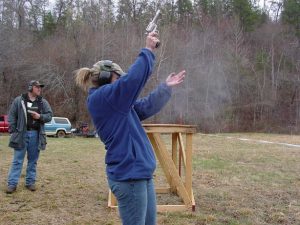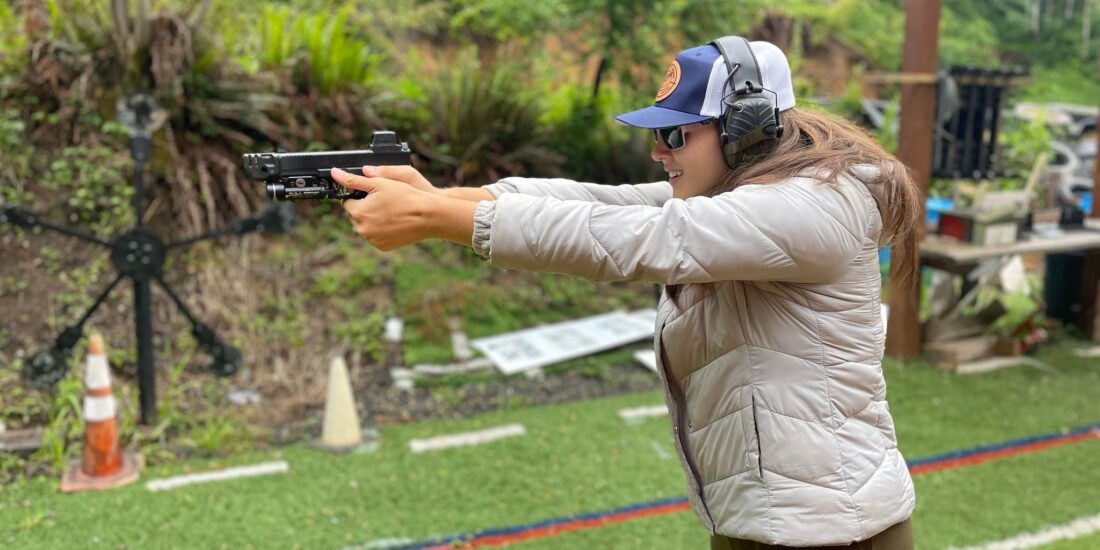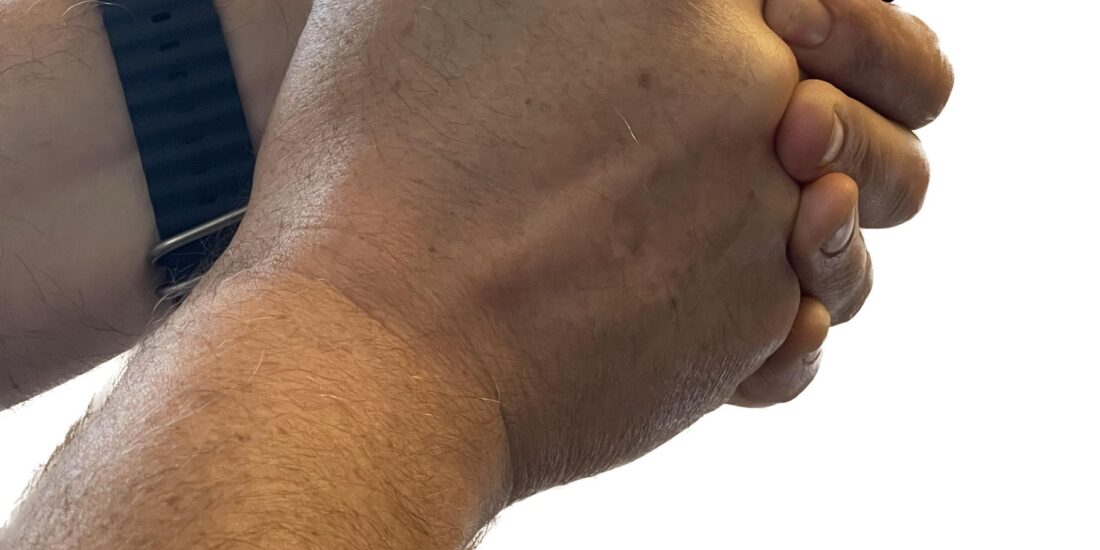Avoid This Dummy Drill & How to Turn it into a Smart Drill…

One of the most popular range drills is the “ball and dummy” drill.
The way it typically works is that someone loads your magazine with mostly live rounds and one dummy round…
With the expectation that, when you get to it, you’ll press the trigger and flinch to manage recoil that didn’t happen.
It’s a “gotcha!”
Sometimes, the simple fact that the instructor is telling the student that it’s a test to see if they flinch will create enough anticipatory stress to cause them to flinch. This is especially the case with a powerful instructor and a less experienced shooter. The power of suggestion of a good instructor is strong.
When it happens, everyone smiles or laughs…the instructor says, “don’t do that,” and the shooter feels a little burst of shame, embarrassment, confusion, a hit of cortisol, and in some cases, even a minor sympathetic response.
It’s a horrible drill for most shooters and you should do your best to avoid it until a very specific time in your training.
What?!?!
You may be saying, “Ox…but every Delta-SEAL-Ninja-SWAT instructor I’ve watched on YouTube and trained with has told us to do that drill—you better have some darn good proof to back that claim!”
I do.
First off, why does flinch happen?
Flinch happens when the brain tries to manage recoil. It can be good or bad, but for 99% of shooters…maybe 99.99% of shooters, flinch is bad.
Flinch can be good in very rare occasions when shooters have it properly timed to happen after ignition to bring the sights back into alignment quicker…it can shave a few hundredths of a second off your splits. (those few hundredths aren’t worth chasing after until you’ve exhausted SEVERAL other opportunities for improving speed…you really need to be able to consistently hold tight groups with .15-.2 splits before you go down the rabbit hole of trying to time your flinch. It has very little practical application and the time/effort would be better spent on superior tactics) I only include this because I know there are several of you .01%ers who are subscribers.
For the other 99.99% of shooters, the flinch happens pre-ignition and causes either low or low-left groups.
Flinch is a natural, normal response to repeatedly having an explosion happen 18” from your face.
It’s especially common among shooters who were introduced to guns with more recoil than they could handle before they had basic firearm manipulation figured out.
This happens for 2 reasons…

First is that when you’re just starting out shooting, everything is new and it can be a little overwhelming to remember stance, grip, sight alignment, sight picture, breathing, trigger press, and follow through.
Add to it a “surprise” break of the trigger and a gun that recoils enough to buck back at your face, a flash of fire, and a loud boom from inadequate newbie hearing protection, and it’s natural to get a little adrenal response.
And, it doesn’t help that a lot of complete jerks hand heavy recoiling guns to new shooters just to see how much the gun flops around when they shoot.
Experiences like this early on create strong, emotional, episodic memories that can QUICKLY get you to flinch in anticipation of recoil just like you’d flinch back from a hot stove after getting burned once or twice.
This conditioned response, once established, can keep coming back like a bad weed and haunt a shooter for the rest of their life unless it is effectively replaced or overwritten by a more effective conditioned response.
Ball and dummy drills just add fuel to the fire, strengthens the conditioned response of flinching by dumping cortisol & adrenaline, and makes it MORE difficult to kick the habit. It makes shooting frustrating, not fun, and reduces the level of neurotransmitters in your brain that you need to learn skills that you want to be able to use under stress.
For new shooters, the key to keeping out of this rut is to start teaching with dry fire and the lowest recoiling platform you have access to until the shooter can handle and manipulate the gun safely and effectively without effort…THEN start moving up to bigger calibers and higher recoil.
The instant flinch enters the picture, it’s time to shift back to less recoil and more dry fire.
If you’re already in this roller coaster cycle of flinching/not flinching, I’ll tell you how to get out of it in a minute.
The second reason why shooters develop flinch is from doing too much live fire training.
The fact is, there is a mini concussive wave that hits your head every time you shoot a live fire round. The bigger the recoil, the bigger the concussive wave. A lot of people seem to be immune to this…but many people, especially those who have had multiple concussions, TBIs, chronic ear infections as a child, tubes in the ears as a child, tinnitus, or balance issues are affected by too much high recoil live fire–and high recoil is relative. It’s not a matter of being tough or weak…it’s a neurological phenomenon.
Even if the concussion doesn’t bother your head, too much high recoil shooting can beat up your hands…especially with light and super-light pistols…and the brain’s natural response to pain that it anticipates is coming is to flinch.
This is something that I’ve talked with several top competitive shooters about “behind the scenes” and one of the reasons why so many shift to doing more and more dry fire training as they progress as a shooter…tens of thousands of rounds of live fire every year can be tough on the mind and body.
When is the Ball and Dummy drill “not dumb?”
There are 2 times…
First, is when a shooter has no problem at all with flinch and wants to practice malfunction drills.
It’s important that when you do this, if you or the shooter flinches, you completely ignore it and ONLY focus on the malfunction drill. Every time you attach an emotional response to a flinch, it makes flinching a stronger conditioned response.
It’s similar to a kid or dog realizing that they get more attention when they act out, everyone knows you can’t reward bad behavior unless you want the bad behavior to continue, so you either ignore it or respond unemotionally. Responding emotionally to a flinch is the equivalent of “rewarding” bad behavior by releasing neurotransmitters in the brain.
**NO instructor that I know does this to their students on purpose. (I used to use this drill with students) They simply haven’t had the opportunity to learn about how memories, skills, and conditioned responses are created and they’re using the best teaching methods that they know. If you know of an instructor who uses ball and dummy drills, you might want to forward this to them.
Second is when you’re using ball & dummy drills to integrate dry fire and live fire.
Here’s what I mean…
Done incorrectly, the way most shooters do it, dry fire will create separate neural pathways for dry fire and live fire.
That means that you can do 1000 dry fire reps without flinching and pick up a gun and flinch on your first live fire shot.
You’ve got to convince the brain that there is only one neural pathway to use, regardless of whether you’re doing dry fire or live fire.
One way to do this is a variation on the ball and dummy drill…and if you’ve been on a lifelong roller coaster of flinching/not flinching, THIS is what you want to do on a regular basis to kick flinching to the curb for good.
The “dumb” ball and dummy drill is mostly live rounds with a couple random dummy rounds.
With the “smart” ball & dummy drill, you simply have someone load your magazine with mostly dummy rounds and 1-2 randomly placed live rounds, without knowing how many. Have them insert the magazine and rack the slide.
Now, pick up your pistol, knowing that there’s a very high probability that you have a dummy round chambered, aim, and press the trigger as if you know there’s a dummy round in the chamber.
Just like your grip firmness and trigger press should be identical between dry fire and live fire, it should be identical regardless of whether you think there’s a dummy round or live round in the chamber.
Don’t give a flyin’ flip if you flinch, but let out a little “whoop!” or “YES!” if you press the trigger with rock solid sight alignment.
If it was a dummy round, then treat it like a malfunction…tap, rack, assess/press again.
If it was a live round and you treated it like it was going to be a dummy round, then you will have shot it without flinching! Give yourself a pat on the back and keep going.
If you are still flinching, the next step is to switch to doing the drill with a heavier gun with a lighter load until you can overcome the conditioned response of flinching…and then work your way back up to your preferred gun/load.
This is an example of applying cutting edge advances in neuroscience to firearms training…and the end result is better performance in less time with less cost. This brain based shooting approach, combined with accelerated learning techniques is the core of what we do.
It makes shooting less stressful, more fun, and high speed / high stress performance shoots through the roof.
If you haven’t done any of our training yet, and are ready to improve quicker and with less effort than your friends who just do live fire training, you need to check out 21 Day Alpha Shooter and Dry Fire Training Cards >HERE<
If you’ve been through 21 Day Alpha Shooter, you’ve got a couple of great advanced options…one is to go through our sub-second draw stroke course, Draw Stroke Mastery
The other is our shoot on the move course… the Praxis Dynamic Gunfighter training which you can learn more about >HERE<.
All of them are a dramatic departure from any other training you’ve seen or done before…and they’ll get you dramatically better results with less effort.
Who do you know who needs to read this? A shooting buddy? Past instructor? Do them a favor and send them a link by email or social media. They’ll be glad you did.






